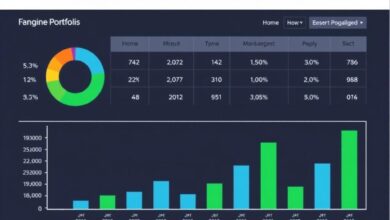How to plan your investments by age group

Setting clear goals is paramount at every stage of life. For young individuals in their 20s and 30s, focusing on growth potential can lead to substantial gains over time. A moderate risk profile allows for greater exposure to equities, fostering long-term wealth accumulation.
As one approaches their 40s and 50s, the focus should shift towards balancing growth with stability. This period often includes family responsibilities and savings for children’s education. Aligning the timeline for short-term needs with medium- to long-term aspirations becomes essential, ensuring that risk tolerance is adjusted accordingly.
Entering retirement requires a strategic reassessment of priorities. Preserving capital while generating income takes precedence. Understanding one’s risk profile during this phase helps in selecting appropriate assets that provide stability and consistent returns, safeguarding against market volatility.
No matter the life stage, regularly revisiting these elements ensures that financial paths remain aligned with evolving personal circumstances and objectives.
Strategies for Young Investors
Prioritize a long-term perspective. With a longer timeline until retirement, young investors can afford to take calculated risks. This means considering equities that have the potential for growth, such as technology stocks or emerging markets.
Assess your risk profile carefully. Understand your ability to tolerate market fluctuations. Higher volatility investments can yield significant returns but may also lead to substantial losses. Diversifying across asset classes can help mitigate risks while allowing for growth.
Utilize age-based investing principles. Allocate a larger portion of your portfolio towards high-growth assets in your earlier years, gradually shifting towards more stable investments as you approach retirement age. A common rule is to subtract your age from 100 to determine the percentage of stocks versus bonds.
Engage in consistent contributions. Regularly adding funds to your portfolio, regardless of market conditions, can enhance growth through dollar-cost averaging, reducing the impact of short-term volatility on overall performance.
Educate yourself continuously. Stay informed about market trends and investment vehicles. Knowledge empowers better decision-making and helps refine your approach as circumstances change over time.
Mid-Career Investment Approaches
Focus on maximizing growth while considering your retirement timeline. As you advance in your career, it’s essential to shift towards a balanced portfolio that reflects your evolving risk profile.
Allocate a significant portion of assets to equities, targeting 60-80%, depending on individual comfort with market fluctuations. This approach can harness the potential for higher returns, crucial for building a substantial nest egg.
Integrate fixed-income securities such as bonds to cushion against volatility. Aiming for 20-40% in these instruments provides stability and income generation, especially as retirement nears.
Diversify across sectors and geographical regions to mitigate risks associated with economic downturns. Consider international stocks and emerging markets for additional growth opportunities while maintaining a core of stable investments.
Regularly reassess allocations based on changing financial situations and life events. Adjusting investments in response to shifts in income or family responsibilities ensures alignment with long-term objectives.
Utilize tax-advantaged accounts like 401(k)s or IRAs to enhance savings. Maximize employer contributions if available, leveraging free money to bolster retirement funds significantly.
Incorporate alternative investments, such as real estate or commodities, to further diversify the portfolio. These assets can act as hedges against inflation and provide passive income streams.
Stay informed about economic trends and adjust strategies accordingly. Monitoring interest rates, inflation forecasts, and market performance helps maintain an adaptive investment stance suited for mid-career professionals.
Retirement Savings Techniques
Prioritize maximizing contributions to tax-advantaged accounts such as IRAs and 401(k)s. Target a savings rate of at least 15% of your annual income, adjusting based on your risk profile and timeline until retirement. Consider escalating contributions annually or with salary increases.
Implement age-based investing by transitioning asset allocation as you near retirement. In your 50s, begin shifting towards more conservative investments, reducing exposure to volatile equities while increasing bonds or stable income-generating assets. This transition should be gradual, ensuring sufficient growth potential while minimizing risks.
Utilize catch-up contributions if you are over 50 to enhance savings further. This allows additional amounts to be contributed beyond standard limits, significantly boosting retirement funds in the final years before retirement.
Evaluate and adjust your risk profile periodically. As market conditions fluctuate and personal circumstances evolve, reassessing your investment choices ensures alignment with your long-term goals while safeguarding against unforeseen economic downturns.
Consider diversifying income sources for retirement beyond traditional savings accounts. Explore options like real estate investments or dividend-paying stocks to create multiple streams of income that can supplement withdrawals during retirement years.
Lastly, regularly review and rebalance your portfolio to maintain desired asset allocation aligned with your evolving financial goals and risk tolerance as you approach retirement age.
Wealth Preservation Methods
Prioritize diversification. Allocate assets across various classes such as stocks, bonds, real estate, and commodities to mitigate risk and enhance stability.
- Bonds: Consider government or high-quality corporate bonds for steady income with reduced volatility.
- Real Estate: Invest in income-generating properties or REITs (Real Estate Investment Trusts) to create a hedge against inflation.
- Commodities: Incorporate gold or silver as a safeguard during economic downturns and currency fluctuations.
Establish an emergency fund. Maintain three to six months of living expenses in liquid assets. This provides security against unforeseen circumstances without disrupting long-term objectives.
Implement tax-efficient strategies. Utilize tax-advantaged accounts like IRAs and 401(k)s to preserve wealth by reducing taxable income and deferring taxes until retirement.
- Roth IRA: Contribute post-tax dollars; withdrawals are tax-free during retirement, benefiting your timeline for wealth retention.
- Health Savings Account (HSA): Use pre-tax contributions for medical expenses; funds roll over annually without expiration.
Review insurance coverage regularly. Ensure adequate life, health, disability, and property insurance align with your financial goals and provide safety nets against unexpected events.
Avoid high-risk investments as you approach retirement age. Shift focus toward preserving capital rather than seeking aggressive growth. Reassess your portfolio’s risk profile periodically to align with changing timelines and financial aspirations.
Create a withdrawal strategy. Plan how much to withdraw from retirement accounts each year to sustain your lifestyle while minimizing tax implications and prolonging the longevity of your savings.
Cultivate financial literacy. Stay informed about market trends, economic indicators, and investment vehicles to make sound decisions that protect your wealth throughout various life stages.
This structured approach ensures that individuals not only safeguard their assets but also position themselves effectively for future goals while adapting to changing circumstances over time.







